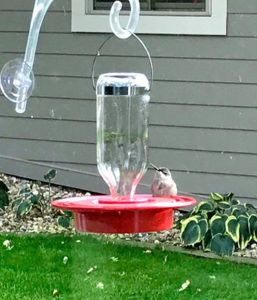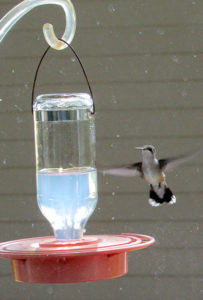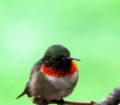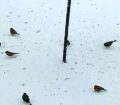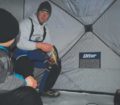By Darial Weisman
How fast time goes. It seems as if spring just arrived and with it began the arrival of our feathered summer visitors. Orioles, evening grosbeaks and hummingbirds all showed up at our feeders. Over the course of getting accustomed with our feeding stations, the summer visitors began to prepare their nests. Completing this feathered menagerie were our year-round residents: cardinals, robins, mourning doves, chickadees, house finches, gold finches, nuthatches, hairy woodpeckers and finally the yellow-bellied sapsuckers. Yes, that is quite a menagerie.
With our feeding station right outside our sunroom, we have the perfect view to watch the antics of these songbirds. You see, my husband and I truly believe that all of these birds have their own special personalities. The more we sit and observe, the more we learn about them.
We get to “know” our year-round feathered neighbors in more detail, but I think the birds with the “biggest” attitude and the tiniest body, and one of the most interesting, have to be the ruby throated hummingbirds. As small as they are, they are really something to watch. Here is what I mean…Many of our perennial and annual flowers offer nectar that will attract hummingbirds. So, we often see them flitting around the yard going from flower to flower, hovering for an instant and then zooming off.
There is no doubt that our feeders really bring in multiple hummingbirds. First, we have found that we need to have multiple feeders out. If there is only one, they spend so much time chasing each other away from the feeder that none of them get to eat as much as they really need to. With our multiple feeders, there is a better chance of them being able to actually hover or perch on the feeder and take in their nectar. The nectar itself can be easily made: mix one part sugar to four parts water and bring to a boil.
With two of our feeders placed on different windows and one a few feet behind hanging on a wrought iron pole, we can just sit back and wait for the arrival. First will be the flash of color-green and red as the hummingbird appears from one of the nearby oak trees. They are aerial acrobats, zigging and zagging and then hovering in one spot. If a second or third appears after the first, they might zoom right at the first hummingbird and chase it away, often back up into the oak tree before they return.
Numbers increase by early September as the hummingbirds begin their migration south. It is at this time that they really feed heavily and will often sit on the perch gorging on the nectar. At the same time, hummingbirds become even bolder and more curious. For example, my husband and I can be outside on our deck, and suddenly, we will hear a buzzing sound coming toward us. Then right in front of us-often a few inches from our face-will be a hummer hovering and staring at us and checking us out. Then all of a sudden, it’s gone or maybe a second one zips right in and chases the first one away. What fun it is as time after time this game is played out.
This heavy feed bag is all meant to give these tiny birds the energy to make it to their wintering grounds as far as Mexico and even Central America. After they leave, we take down the feeders, clean them out and put them away until next spring.
Make sure things are ready for wintertime feeding
At this time of the year, it is always a good idea to make sure the feeders are clean. After a summer of rain and humidity, there is a good chance that the bottom of the feeders might have spoiled and caked gobs of seed. Also, a reminder to keep the bird waterers cleaned out and also filled with clean water. With these tasks completed, it’s all about enjoying your visitors. Oh, and keeping the feeders filled!
